Baked Whiting
This post may contain affiliate links. See my disclosure policy.
My baked whiting recipe is deceptively simple, and the results are fresh, lightly seasoned fillets dressed in melted butter and fresh dill.
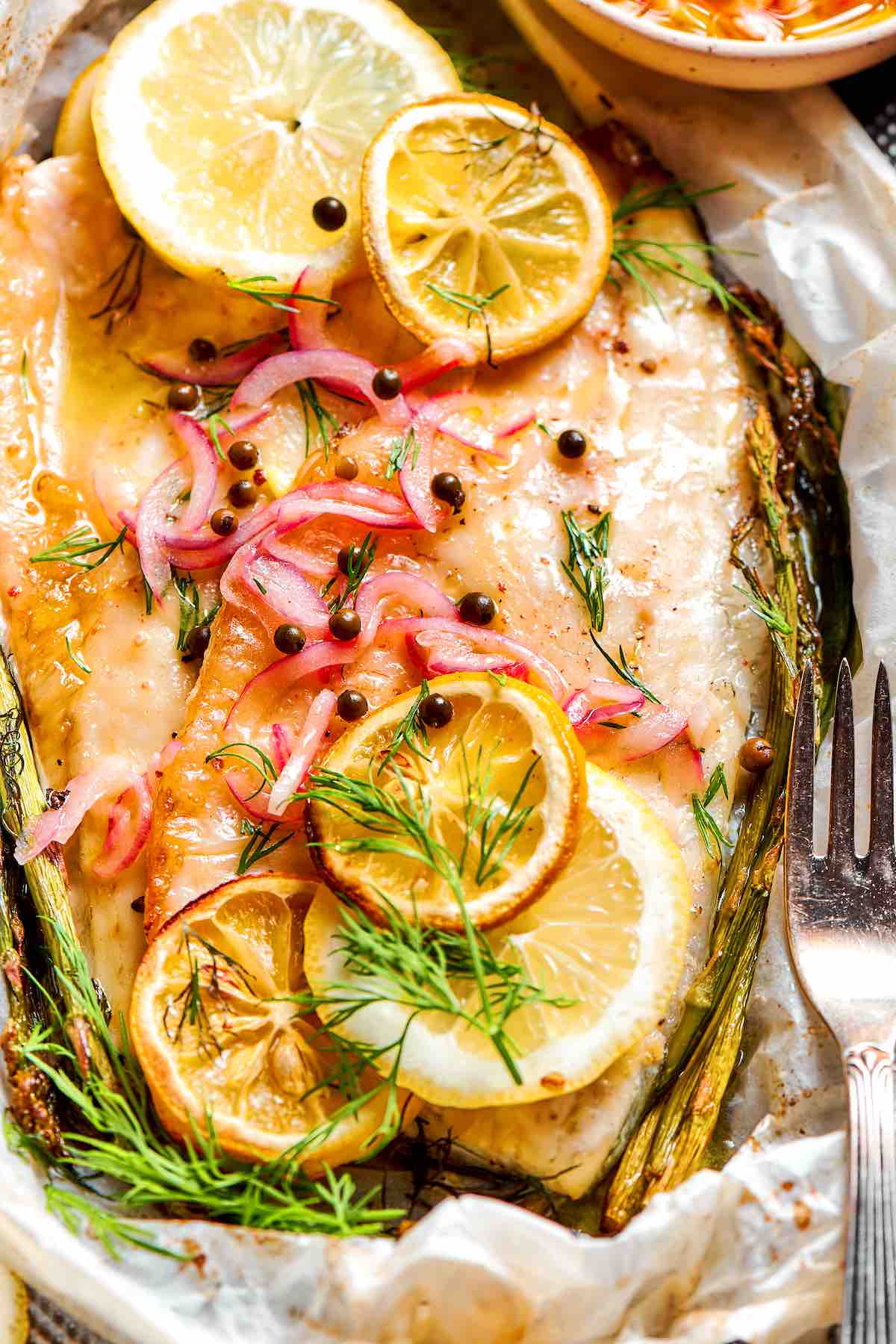
I make fish at least once a week for my family- it’s a lean source of protein and nutrients, including B vitamins and baking it in parchment paper makes cleanup effortless. Over time, I’ve found whiting to be one of the most reliable white fish for quick weeknight dinners: healthy, fast, and consistently easy.
Whiting, sometimes labeled Pacific Hake, has a mild flavor, which I love to experiment with. I kept this version simple to highlight the fish itself, and now it’s the one my family actually asks for by name- surprising, since seafood has never been their go-to request!
I usually serve it with roasted veggies (cooking at the same time as the fish bakes!), a green salad, or crusty bread for soaking up those buttery juices. It’s my ‘busy weeknight’ fallback, but also elegant enough for friends or a casual dinner party.
Table of Contents
Why make my baked whiting recipe
- Affordable. Whiting is one of the most affordable fish you can buy, and it’s available everywhere.
- Healthy. It’s high-protein (32 grams per serving) and just 9 grams of healthy fats.
- Tried and true. I tested this recipe multiple times to ensure the fish turns out flaky, tender, and buttery in every bite.
- Pantry staples only. Besides the fish, you’ll need a handful of flavor boosters.
Key Ingredients
Find the printable recipe with measurements in the recipe card below.
- Whiting fillets. Look for 4-ounce fillets that are even in thickness, pearly white, and with minimal ‘fishy’ aroma. I tested this with frozen fillets, which work: just let them thaw overnight or submerge them in cold water for 30 minutes before cooking.
- Kosher salt and black pepper. To taste.
- Melted butter. To dress the fish. I’ve also used extra-virgin olive oil, but I find that the flavor of butter works much better.
- Fresh dill. This is my favorite herb for most white fish, particularly whiting. A little goes a very long way.
- Lemon. Sliced and baked along with the fish. I learned in culinary school that doing this also infuses extra flavor from the rind. The acidity also balances the richness of the butter.
Ways to change up the seasonings
I mentioned this earlier, but whiting really is a blank canvas. Here are some other ways I’ve changed the flavor profile:
- Herbs. Swap the dill for fresh rosemary, thyme, parsley, or oregano.
- Seasonings. Add 1-2 teaspoons of garlic powder, onion powder, paprika, or seafood seasoning.
- Lemon garlic butter. Mix minced garlic and lemon juice with the butter mixture before drizzling it over the fillets.
How to bake whiting
Step 1- Season. Dry the fillets with a paper towel and season both sides.
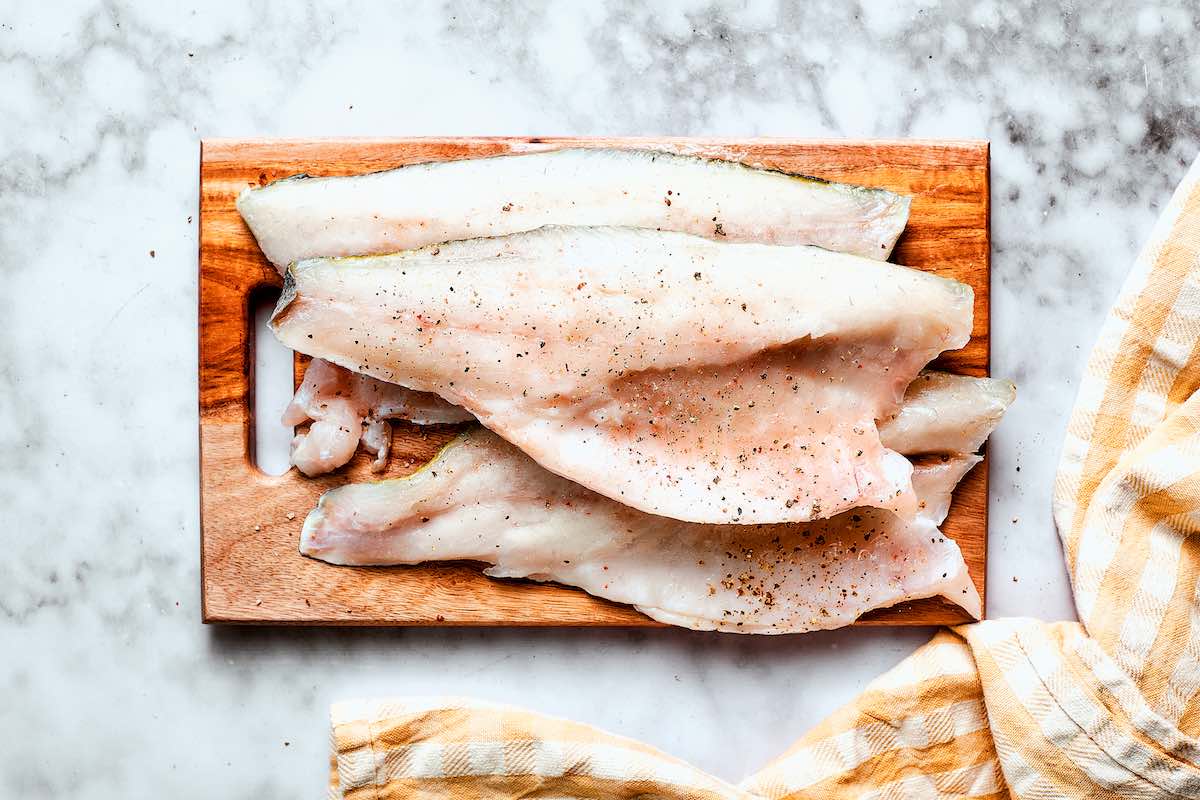
Step 2- Assemble. Place lemon slices on top of the fish, drizzle with the dill butter, and wrap the parchment paper to enclose the fillets.
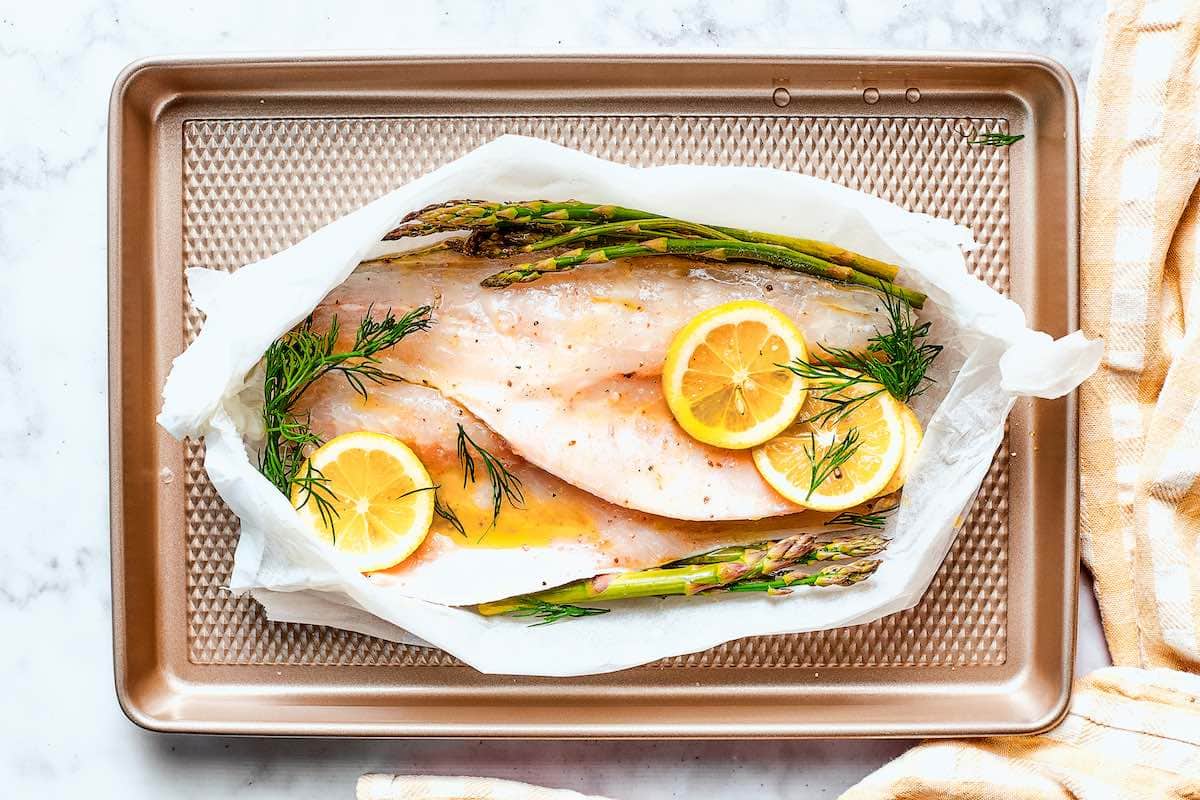
Step 3- Bake. Bake the fish until tender, then rest briefly before serving.
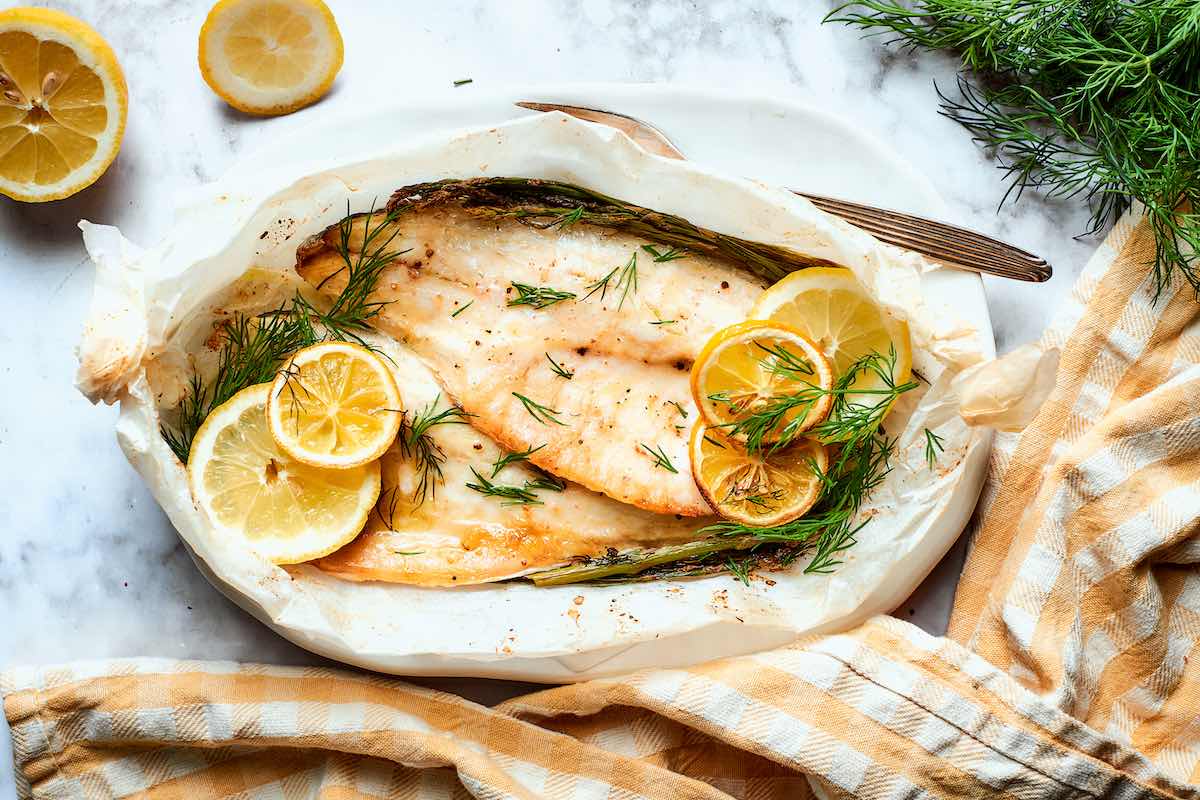
My tips to guarantee success
- Let the fish come to room temperature. I find this quickens the baking process and helps the fish cook more evenly.
- Use an instant-read thermometer. I use my thermometer more than any other kitchen tool, and it’s especially useful when cooking a delicate white fish. You’ll know it’s done cooking when the meat thermometer reads 145°F.
- Don’t swap parchment for aluminum foil. I tried this once, and the foil got too hot, overcooking the fish.
- Check fillet doneness. Not all whiting fillets are equal! Thinner pieces will bake in as little as 7 minutes, whereas thicker ones are upward of 10 minutes. Keep an eye on them and adjust the cooking time accordingly.
Frequently asked questions
Store the cooled fish fillets in an airtight container in the fridge for up to 3 days. You can also freeze the cooked fillets (with sheets of parchment paper between each to prevent sticking) and freeze for up to 3 months.
If you can’t find whiting, most white fish will work in a pinch. I’ve tested tilapia, hake, and pollock with the same parchment method. Tilapia comes out slightly softer, but hake and pollock stay firm and tender.
Because this fish is super mild in flavor, I like to pair it with simple sides that don’t detract from the fish. My go-tos are roasted root vegetables, spinach salad, and some simple basmati rice. If it’s a heartier meal, mashed potatoes or some creamy noodles work beautifully.
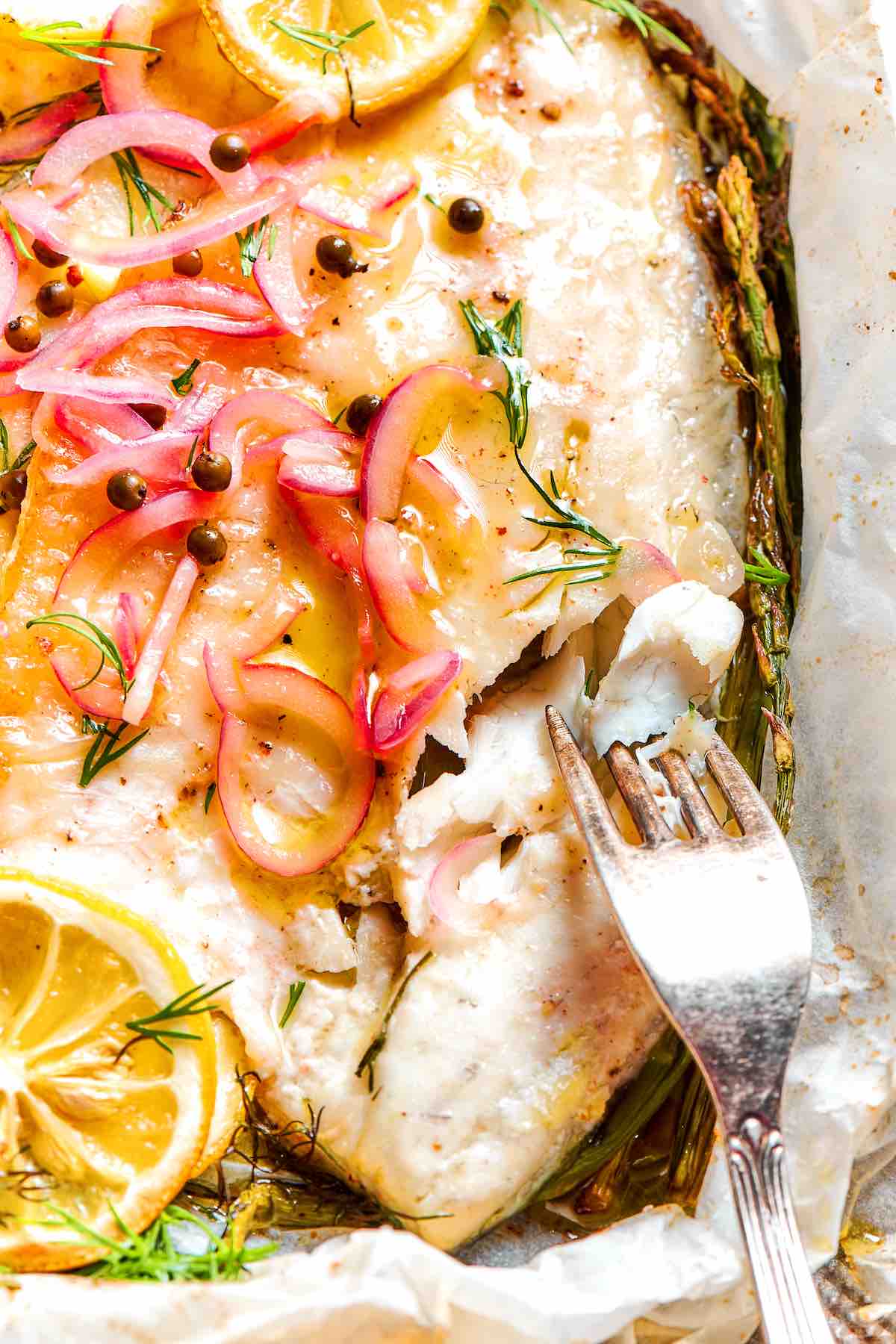
✅ Nutrition reviewed
Since this fish discusses health benefits, the nutrition information has been reviewed by registered dietitian Felicia Newell, MScAHN, RD, CPT.
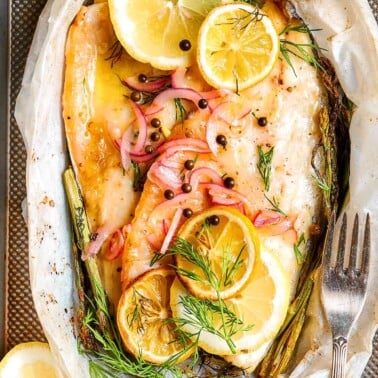
Baked Whiting
Video
Ingredients
- 4 whiting fillets 4 ounces each
- 1/2 teaspoon salt
- 1/2 teaspoon pepper
- 2 tablespoons butter melted
- 2 tablespoons fresh dill chopped
- 1 lemon thinly sliced
Instructions
- Preheat the oven to 375°F (190°C).
- Pat dry the whiting fillets and season both sides with salt and pepper.
- Whisk together the melted butter and chopped dill.
- Cut a large sheet of parchment paper (13-14 inches) and fold in half.
- Place the seasoned whiting fillets on top. Spread the lemon slices over the top, then drizzle the butter and dill mixture. Wrap the parchment paper to form a parcel.
- Bake the whiting for 7-10 minutes (8-9 minutes is my sweet spot), or until the fish is flaky and tender. You can also check the internal temperature and aim for 145°F.
- Remove the baked whiting from the oven and rest for a few minutes before serving.
Notes
- Whiting substitutes: Tilapia, hake, or pollock.
- Frozen whiting fillets: Let them thaw overnight or submerge in water for 30 minutes. I don’t recommend cooking from frozen: the fish steams from the excess moisture and looses flavor.
- Leftovers: Keep in the fridge for 2-3 days or the freezer for up to 3 months.














Healthy, simple, fresh and yummy
Thank you for the feedback, Lisa!
This recipe is my favorite lite fish dish. I began making this over 40 years ago. Your recipe is even better. I’m going to have this tomorrow.
Thank you so much, Greta- thank you for your wonderful feedback!